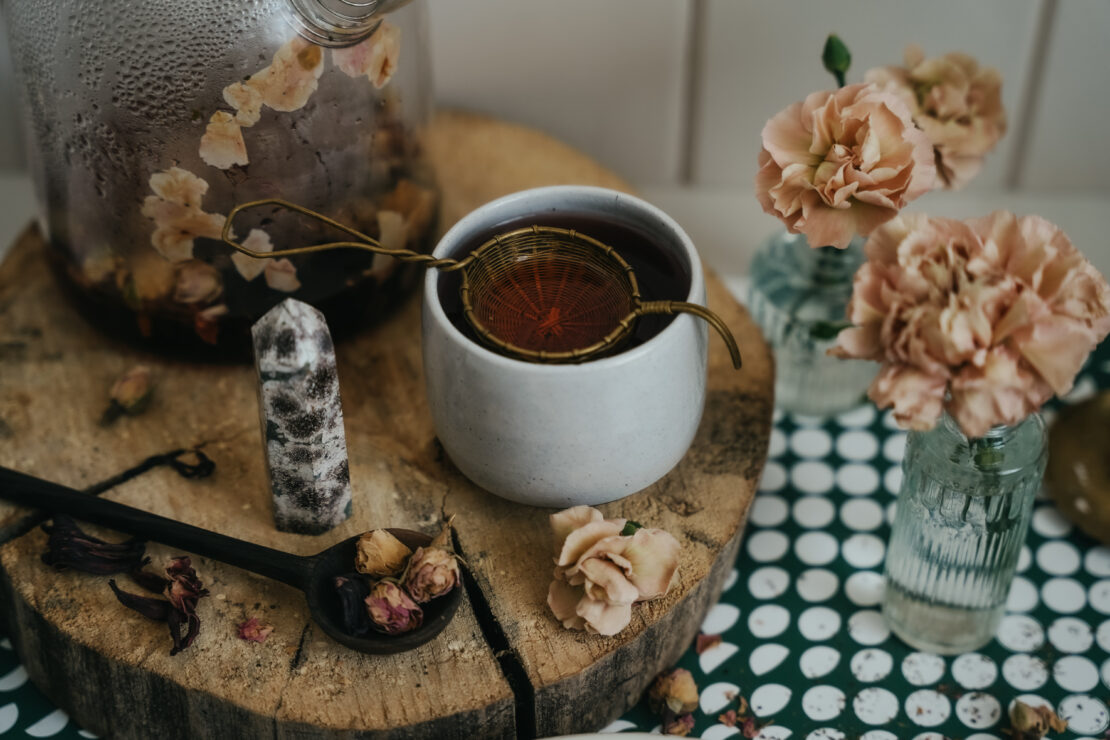
In Bloom: Floral Tea Recipe for the Full Moon
For those who pay special attention to the lunar cycles, the Full Moon is commonly recognized as a time for manifestation and fruition. If the New Moon is auspicious for intention setting, rest, and reflection, the Full Moon is the time when our intentions and dreams flower into full form. As author and astrologer, Demetra George (1992) elegantly describes, “This is the peak of the light and total illumination of the vision…The symbolic seed flowers (p. 67). Lunar cycles can impact our sleep, energy levels, and creativity cycles. In addition, the phases of the Moon influence the growth cycles of plants. By tracking the phases of the Moon and how we and our plant friends respond, we can become more attuned to subtle energy shifts and can learn to work with ourselves and our plant allies in increasing harmony.
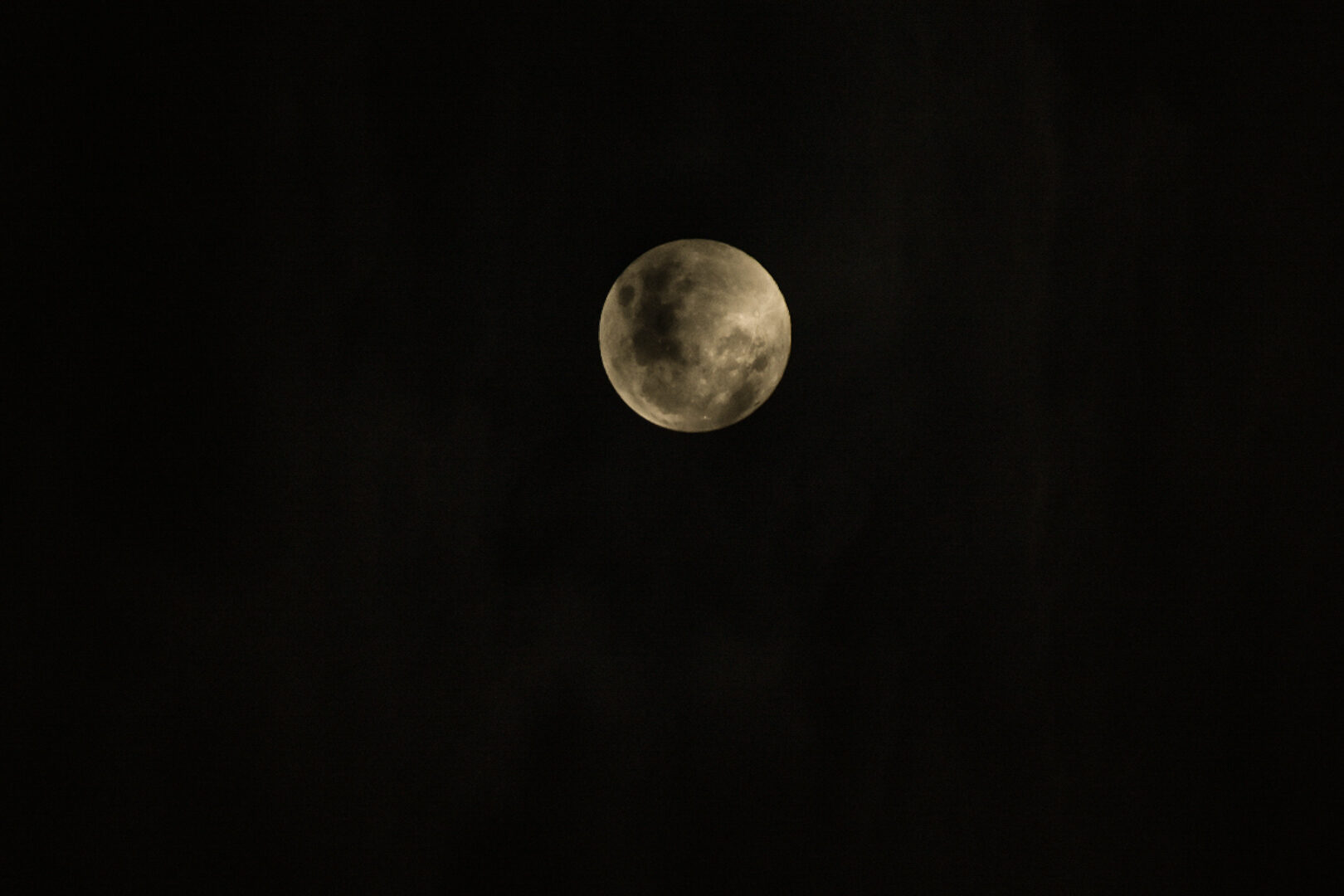
Energy Of The Full Moon
The Full Moon is often thought of as a time of heightened energy and is even associated with mythical and supernatural occurrences—the activities of werewolves and the like. However, there may be a reason behind the lore. Surfers learn to track the ocean tides by the phases of the Moon because they know that the Moon’s cycles have an observable influence in this respect (Elenbaas, n.d.). The Moon’s gravitational pull on Earth causes the waters of the ocean to bulge on the side of the Earth that is closest to the Moon at any particular moment. This results in higher tides, called spring tides, during the New Moon and Full Moon and lower tides, called neap tides, during the quarter moons (NASA, 2021).
Furthermore, our bodies as well as plant bodies are made mostly of water. When there is a heightened gravitational pull—such as during the Full Moon—the tides of the oceans rise, and this affects the water in our bodies as well. Extending this metaphorically, our emotions are linked to the water element. Thus, during the Full Moon, our emotions may also feel more full and heightened (Elenbaas, n.d.).
As herbalists and herbal enthusiasts, it may be interesting to know that herbal and farming traditions around the globe honor age-old practices of using the phases of the Moon as a guide for planting, harvesting, and formulating. For instance, some herbalists will make specific herbal formulas only during certain phases of the Moon; one can infuse formulas under the light of the Full Moon to impart a cooling, lunar energy to the herbs. Part of the reason for the impact of the Moon on plants is again, water, and how the phases of the Moon affect soil moisture. Also, lunar cycles impact growth cycles and whether the overall pull is more upward or downward. For instance, the Waxing Moon cycle tends to have a more upward extending energy, making it better to plant crops that yield above ground (grow upward) during this time. Conversely, crops that yield below ground (such as carrots and potatoes) are ideal for planting during the Waning Moon when the downward pull is stronger (Boeckmann, 2023). Furthermore, the Moon can affect the chemical composition of plants, with herbs such as St. John’s Wort (Hypericum perforatum) demonstrating a higher concentration of certain constituents when harvested on the Full Moon (Elenbaas, n.d.)
To connect the phases of the Moon to the annual solar calendar, the Full Moon can be likened to the summer solstice (Elenbaas, n.d.). It is the time when Mother Nature is in her full glory. The Full Moon is a time to celebrate and delight in the brilliant fullness of this lunar luminary. That said, with emotions perhaps a bit heightened, it may also be a good idea to add a dose of measured caution into the mix when the Moon is at its brightest. This Full Moon Floral Tea offers a sense of both celebration for the Moon’s light reaching its fullest, as well as temperance, thanks to the calming, sattvic qualities of two floral gems: rose (Rose spp.) petals and hibiscus (Hibiscus sabdariffa) calyx.
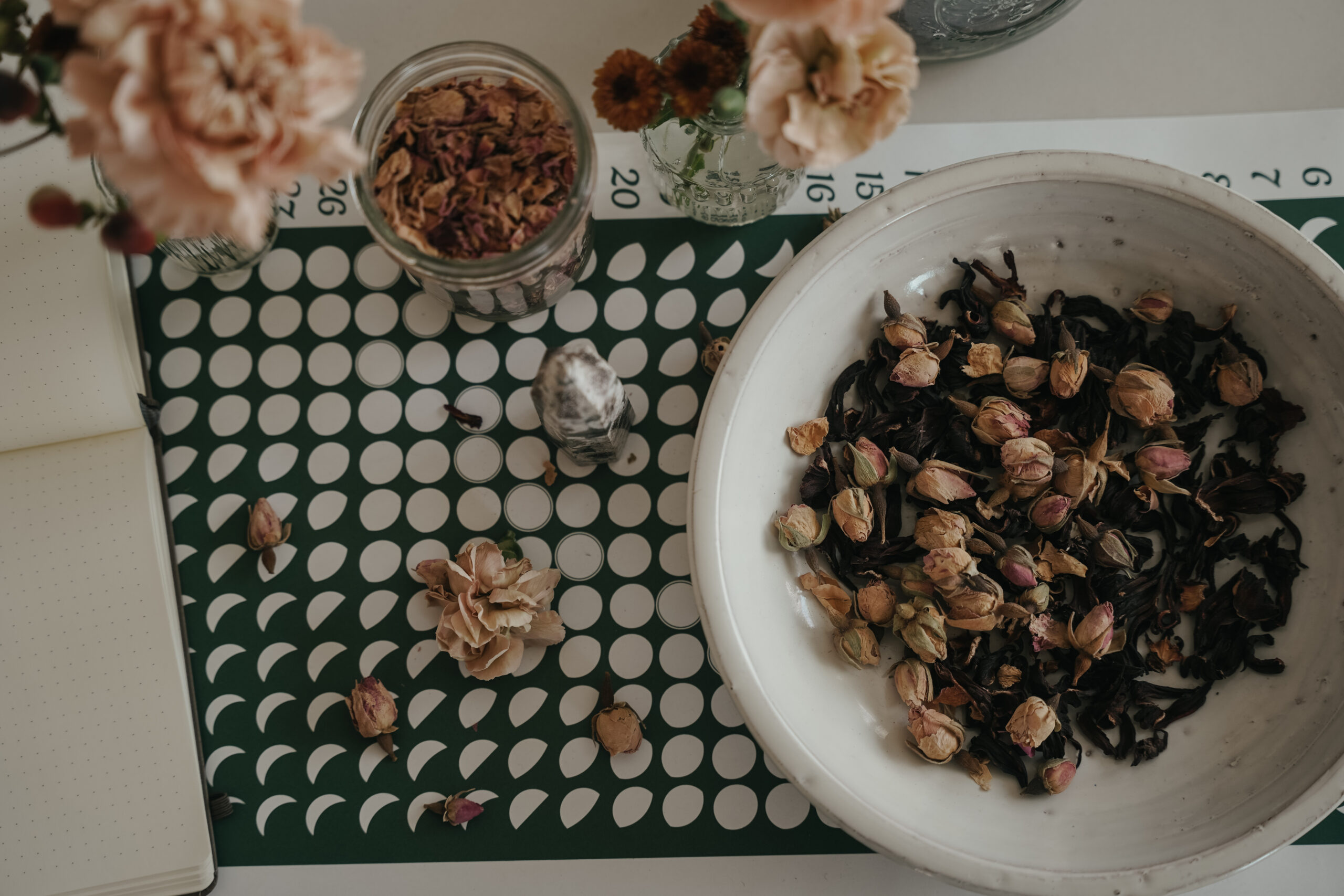
Floral Beauties for The Full Moon
Why rose and hibiscus? In honor of fruition, flowering, and manifestation, a floral tea seems fitting for the Full Moon. In addition, the combination of hibiscus and rose has a gently calming, purifying, and heart-supportive effect which can help balance the heightened energy of the Full Moon.
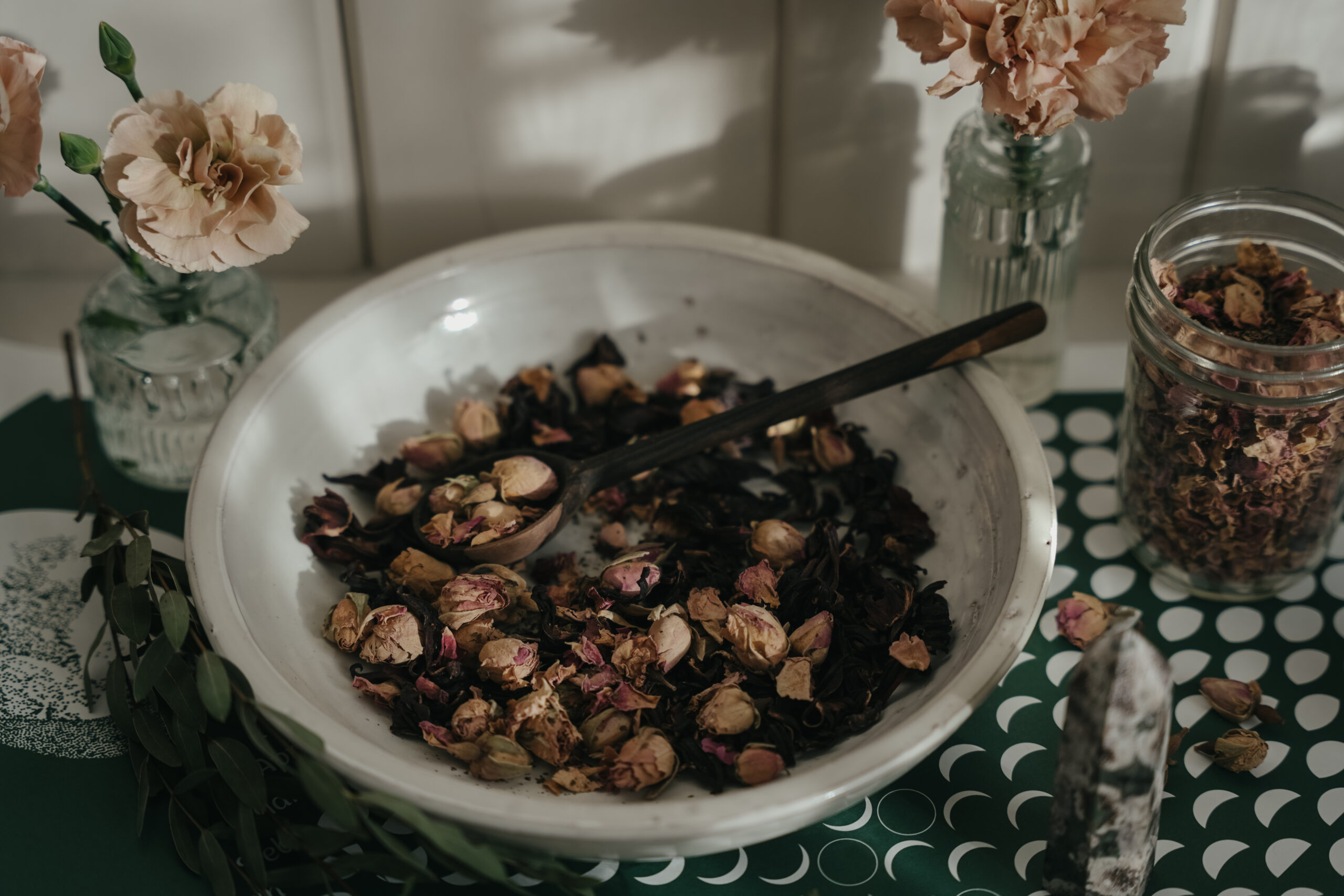
Hibiscus (Hibiscus sabdariffa) calyx
Hibiscus is a plant of significance in ayurvedic tradition. This lovely deeply-colored tropical flower is indicated for kidney problems and to support both sexual and cardiovascular health (Frawley & Lad, 2001; Groves, 2016). Hibiscus is also a rich source of antioxidants and has been shown to reduce high blood pressure and to have a regulating effect on blood sugar and a favorable effect on cholesterol (Groves, 2016). Furthermore, hibiscus has a purifying (alterative) action on the blood as well as being clearing and cleansing to the emotional heart. Turn to hibiscus for skin and urinary issues, to support the heart, to help regulate menstruation, and to clear out heat and congestion (Frawley & Lad, 2001). Furthermore, hibiscus is associated with the Hindu elephant god, Ganesha, the remover of obstacles. Thus, the flower is often used in devotional ceremonies and may assist in meditation (Frawley & Lad, 2001).
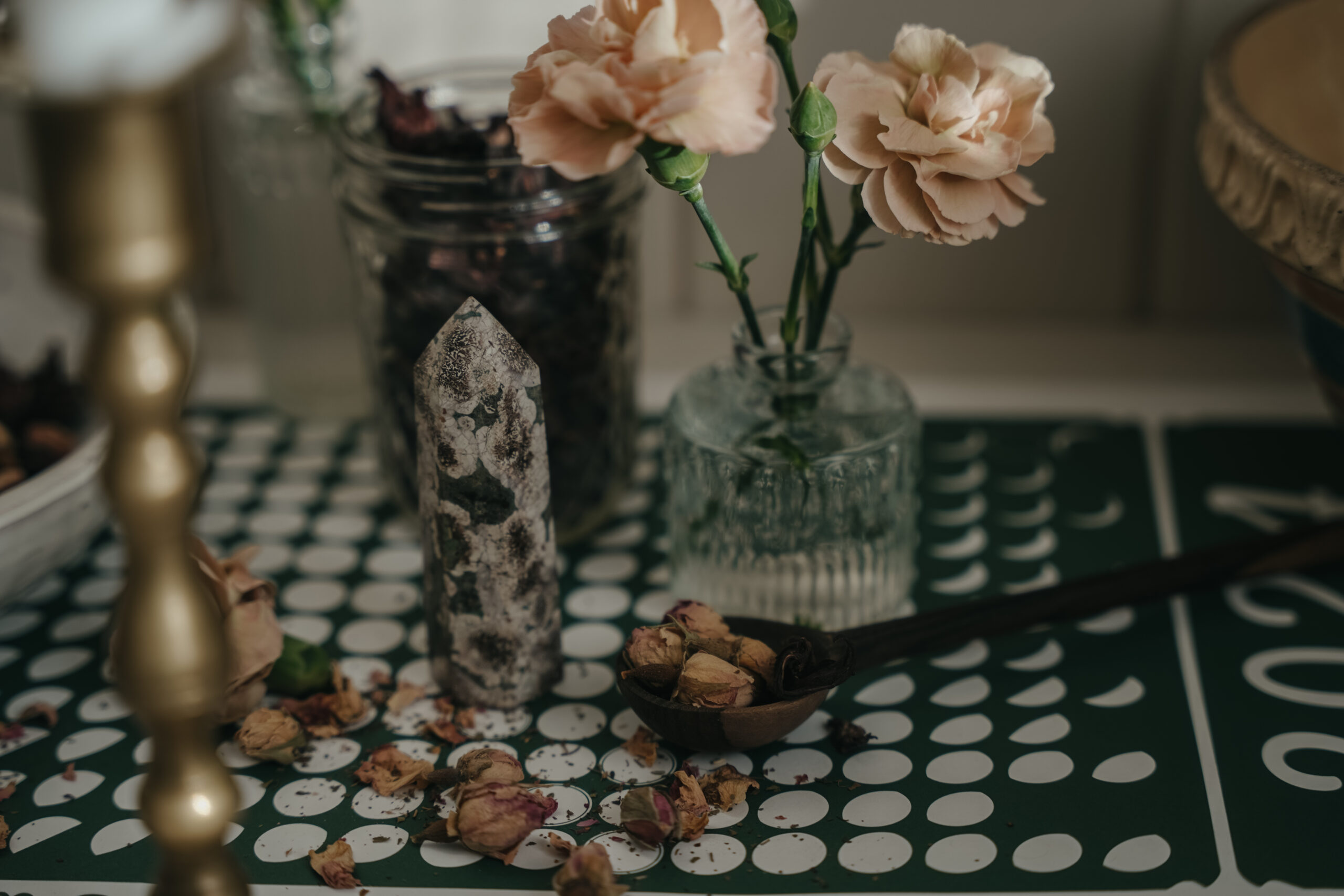
Rose (Rosa spp.)
Rose is another visually-pleasing, aromatic heart-friendly flower. Not enough can be said about the usage and significance of the rose. In fact, for more ideas on how to enjoy and benefit from roses, read our article 34 Ways To Use Roses. Roses uplift and gladden the heart—simply inhaling the aroma of rose has a marked effect. In addition, in preliminary studies, roses have been shown to calm anxiety, boost mood, reduce blood pressure, and possess anti-inflammatory effects—all pointing to rose’s ability to uplift, unburden, and support both the physical and emotional heart (Groves, 2016).
Rose petals perfectly complement hibiscus in this floral tea blend. In fact, according to ayurvedic practitioners, scholars, and authors David Frawley and Dr. Vasant Lad (2001), roses, hibiscus, and lotus flowers all have a similar energy, and hibiscus and rose make a particularly good combination due to their similar and complementary attributes.
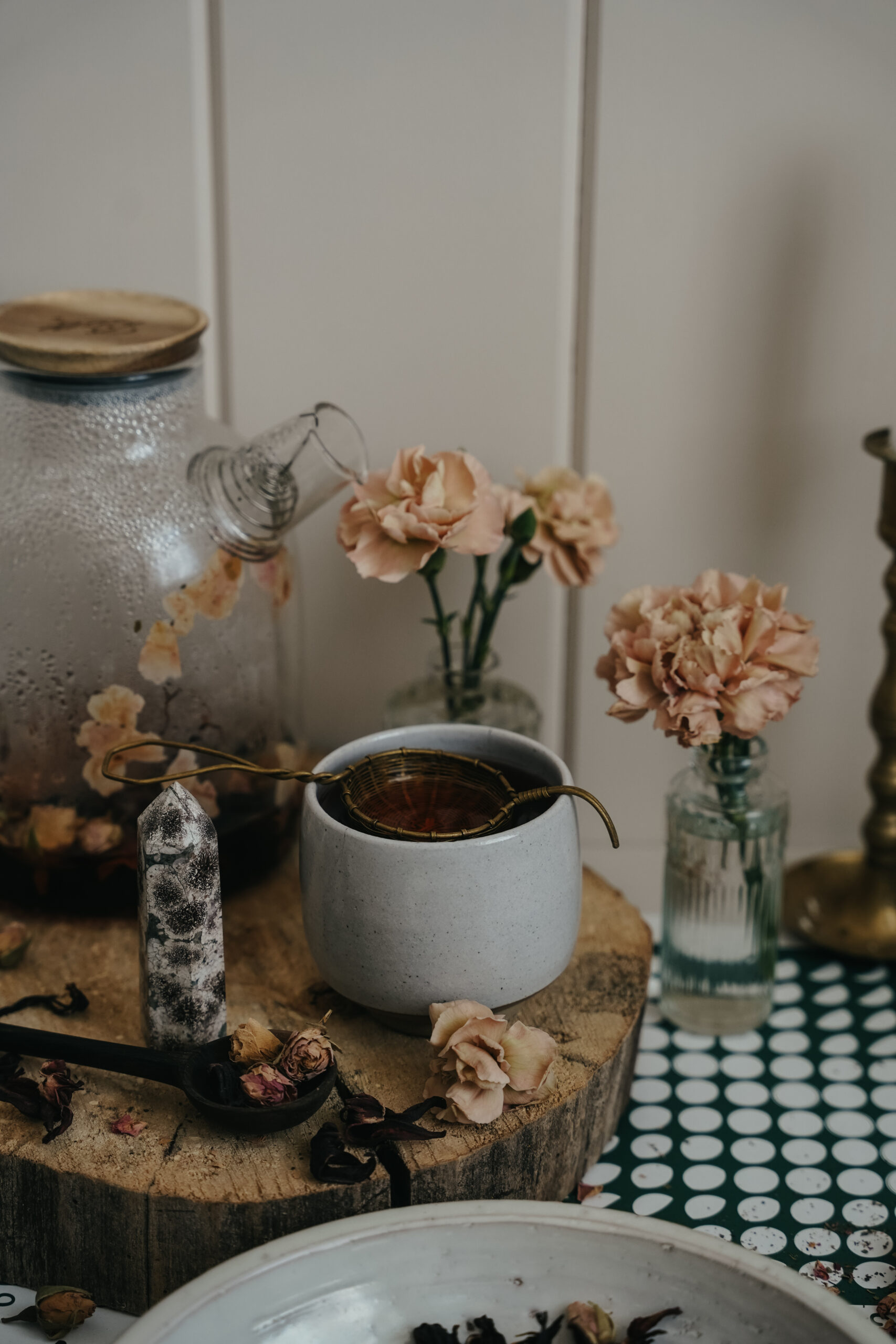
This tea is naturally tart, tangy, and pleasantly aromatic. Hibiscus calyces impart a deep burgundy-cherry hue and rose petals add a heart-supportive aromatic effect. The combination of these two beautiful flowers benefits the skin, blood, nervous system, and both physical and emotional heart. Brew a cup of Full Moon Floral Tea on a Full Moon night and soak in the moonlight. This recipe specifies the amounts in parts. A part can be anywhere from a teaspoon to a ¼ cup.
2 parts hibiscus (Hibiscus sabdariffa) calyx, driedFull Moon Floral Tea Recipe
1 part dried rose (Rosa spp.) petals, dried
In Closing,
The Full Moon is a perfect time to delight and revel in the beauty of the moonlight at its fullest. Though emotions may run high during this time, sipping a cup of Full Moon Floral Tea can help bring about a sense of calm and lightness in the heart, and is a reminder to celebrate all that has come to life and taken shape during the past lunar cycle. It may also be helpful to remember that if you work with intention-setting during the New Moon, it can take several lunar cycles before those hopes, dreams, and goals take structure. Sip on this richly colored floral tea, take a moonlit garden stroll, and as the great Austrian poet Rainer Maria Rilke once penned, “Be patient toward all that is unsolved in your heart and try to love the questions themselves.”
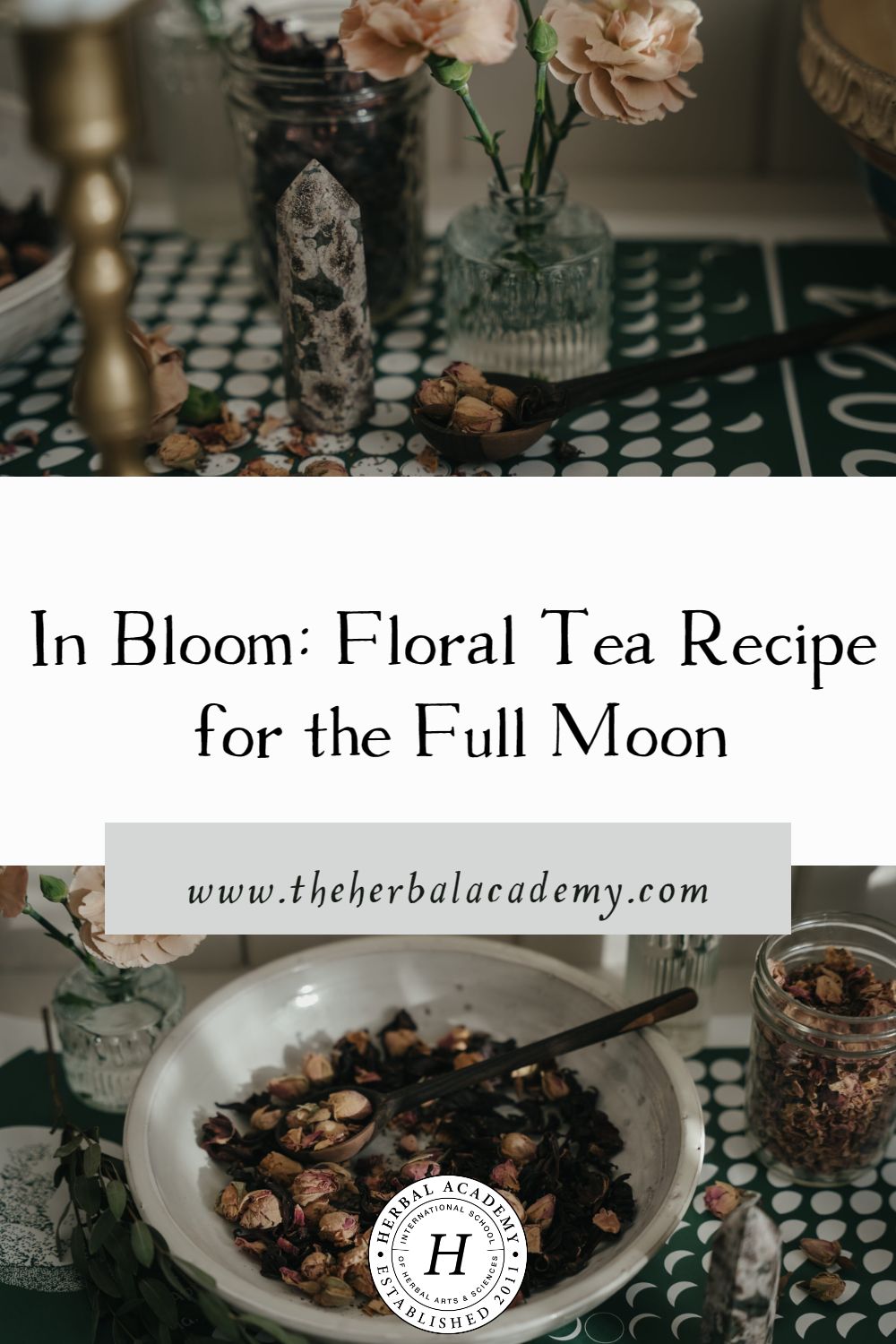
REFERENCES
Boeckmann, C. (April 23, 2023). Learn how to garden by the Moon’s phases. Old Farmer’s Almanac. https://www.almanac.com/content/planting-by-the-moon
Elenbaas, A. (n.d.). The remarkable hidden connection between the moon and plants. Skyhouse Herb School and Apothecary. https://www.skyhouseherbs.com/blog/the-remarkable-hidden-connection-between-the-moon-and-plants
Frawley, D., & Lad, V. (2001). The yoga of herbs (2nd ed.). Lotus Press.
George, D. (1992). Mysteries of the dark moon: The healing power of the dark goddess. HarperOne.
Groves, M.N. (2016). Body into balance: An herbal guide to holistic self-care. Storey Publishing.
NASA. (August 5, 2021). Tides. https://moon.nasa.gov/resources/444/tides/#:~:text=The%20Moon%20and%20Earth%20exert,are%20where%20low%20tides%20occur.








